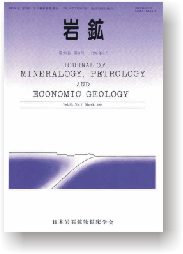All issues

Current issue
March
Displaying 1-1 of 1 articles from this issue
- |<
- <
- 1
- >
- >|
ORIGINAL ARTICLE
-
Hideki MURAKAMI, Isao TAKASHIMA, Norimasa NISHIDA, The late Susumu SHI ...2000 Volume 95 Issue 3 Pages 71-84
Published: 2000
Released on J-STAGE: July 25, 2006
JOURNAL FREE ACCESSThe solubility and behavior of lead in feldspar are elucidated by EPMA and X-ray photoelectron spectroscopy (XPS; also known as ESCA) analyses for green orthoclase (amazonite) from Broken Hill, New South Wales, Australia. The role in the crystal structure establishes Pb cation as PbAl2Si2O8 endmember for the orthoclase solid solution, and the maximum quantity of PbAl2Si2O8 is 3.8 mol% in the green orthoclase.
The lead cations, except the one existing in the orthoclase lattice, namely structurally bound Pb, occur in the green orthoclase by the following two ways; 1) as galena inclusions, and 2) as unidentified Pb-bearing micro-inclusions. The chemical shift for Pb atom in the green orthoclase was investigated by XPS, and compared with those in a Pb-metal, Pb-oxides, and a galena. Differences in the binding energy between Pb in the green orthoclase and other Pb-substances show distinctly that most of the Pb is not present as impurities like micro-minerals, but as structural components in green orthoclase. Crystal chemical consideration of Pb affords us infallible discrimination of solubility of PbAl2Si2O8 endmember rather than PbAlSi3O8. The existence of PbAl2Si2O8 as the main endmember in green orthoclase exhibits the charge-coupled substitution in the extra framework and the tetrahedral site; K++Si4+ ↔ Pb2++Al3+.
Inhomogeneous distribution of Pb cation within the single crystal shows that the condition of Pb cation in green orthoclase structure is unstable.View full abstractDownload PDF (7992K)
- |<
- <
- 1
- >
- >|